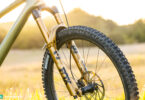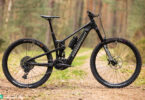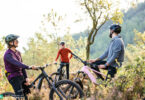The Moterra 1 is Cannondale’s flagship model, featuring a completely redesigned carbon frame and the new Bosch motor. Smart details promise performance on the trail and in everyday life.
Click here for an overview of the best eMTB 2020 group test.
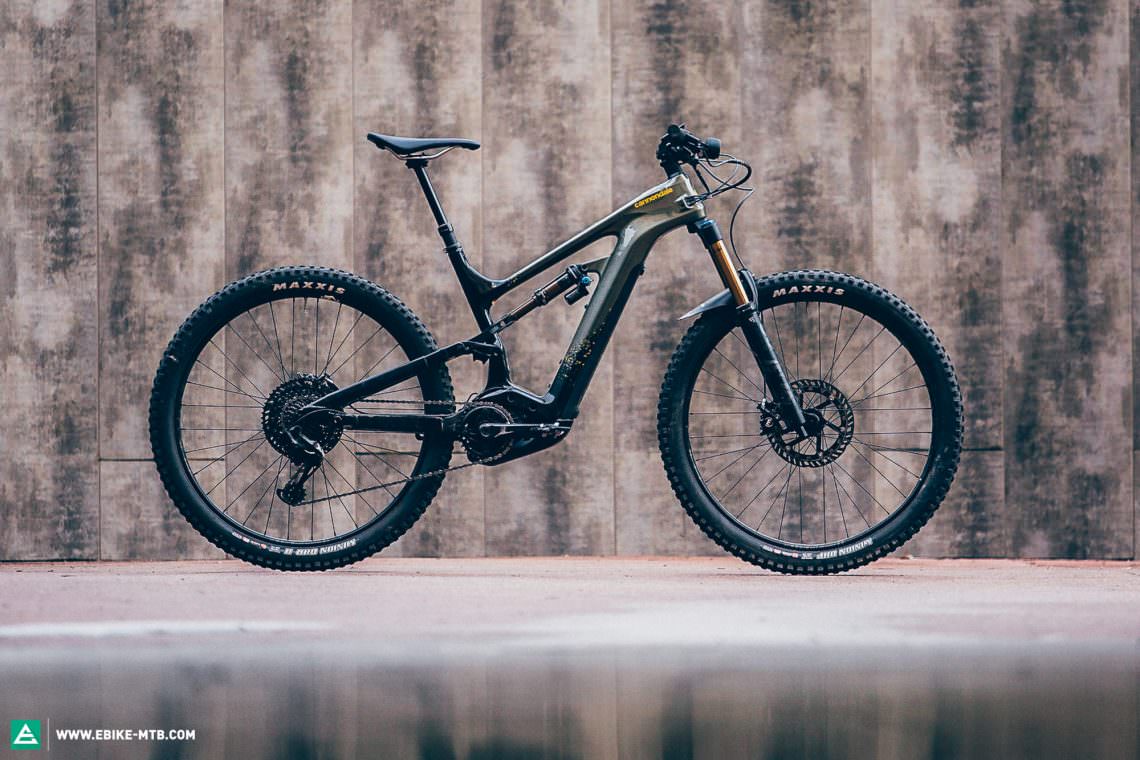
€ 7,999 | manufacturer website
With the launch of the new Bosch Performance CX motor, Cannondale completely redesigned the Moterra for 2020 to accommodate the new system. The times of the “pot-bellied pig” with the battery attached under the down tube are over. The € 7,999 Cannondale Moterra 1 comes equipped with a 625 Wh battery and the Bosch Performance Line CX 2020 motor, both neatly integrated into the carbon frame. Cannondale rely on an aluminium skid plate to protect the motor, which also covers up the distinctive kink in the motor’s housing.
Components, weight and technical details of the Cannondale Moterra 1
A unique feature of the Cannondale Moterra is the size-specific suspension kinematics and wheel size. In size S, the Moterra 1 rolls on smaller 27.5″ wheels. For all other sizes, Cannondale have specced large 29×2.6″ MAXXIS Minion tires, though unfortunately with the more puncture-prone EXO+ carcass. Regardless of the size, the FOX Factory suspension offers 160 mm travel front and rear. MAGURA MT7 brakes with the new MDR-P rotors (220 mm up front) take care of braking. For the cockpit and seat post, Cannondale have specced more basic in-house aluminium components. What Cannondale have saved there, they’ve invested in the Supernova M99 MINI PRO light mounted in front of the stem: an ultra-bright headlamp featuring low and high-beam, powered by the Moterra’s internal battery. Thus, the bike is ready for night rides or commuting, right off the shelf!
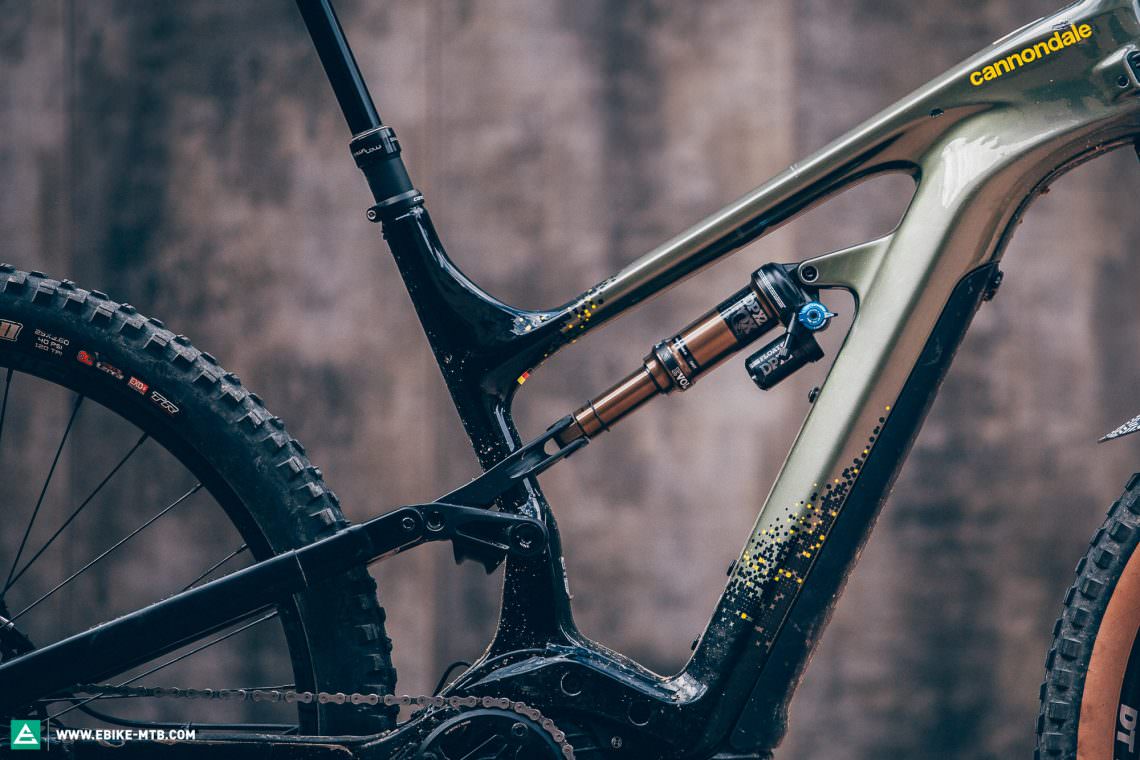
The suspension of the Cannondale Moterra 1 is very plush without bottoming out too easily, but you don’t get enough feedback from the trail and there’s too little support for jumps.
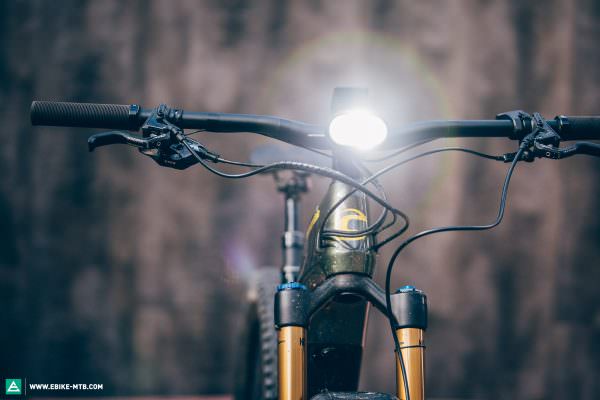
The Supernova M99 MINI PRO headlight comes fitted as standard on the Cannondale Moterra 1. The light’s low and extremely bright high-beam is powered by the bike’s internal battery.
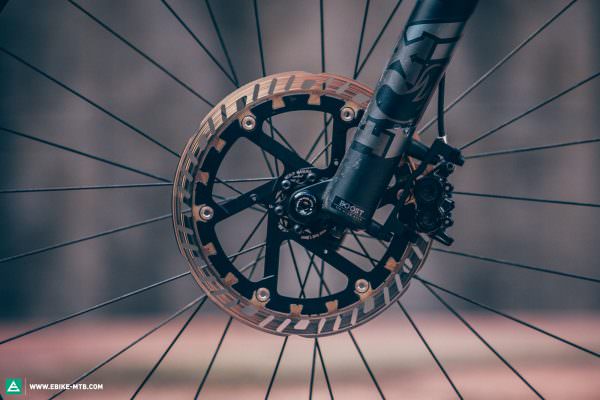
In combination with the 220 mm MDR-P rotor, the MT7 on the Moterra 1 is the best brake from MAGURA we’ve ever ridden: powerful, yet easy to modulate and very reliable.
Cannondale Moterra 1
€ 7,999
Specifications
Motor Bosch Performance Line CX 75Nm
Battery Bosch PowerTube 625Wh
Display Bosch Kiox
Fork FOX 36 GRIP2 Factory 160 mm
Rear Shock FOX DPX2 Factory 160 mm
Seatpost Cannondale DownLow 100 – 150 mm
Brakes MAGURA MT7 220/200 mm
Drivetrain SRAM X01 Eagle 1x12
Stem Cannondale 1 Alloy 55 mm
Handlebar Cannondale 3 Riser Alloy 780 mm
Wheelset Stan’s Flow MK3 29" (S = 27.5")
Technical Data
Size S M L XL
Weight 24.16 kg
Perm. total weight 150 kg
Max. payload (rider/equipment) 125 kg
Trailer approval no
Kickstand mount no
Specific Features
Supernova M99 Mini Pro
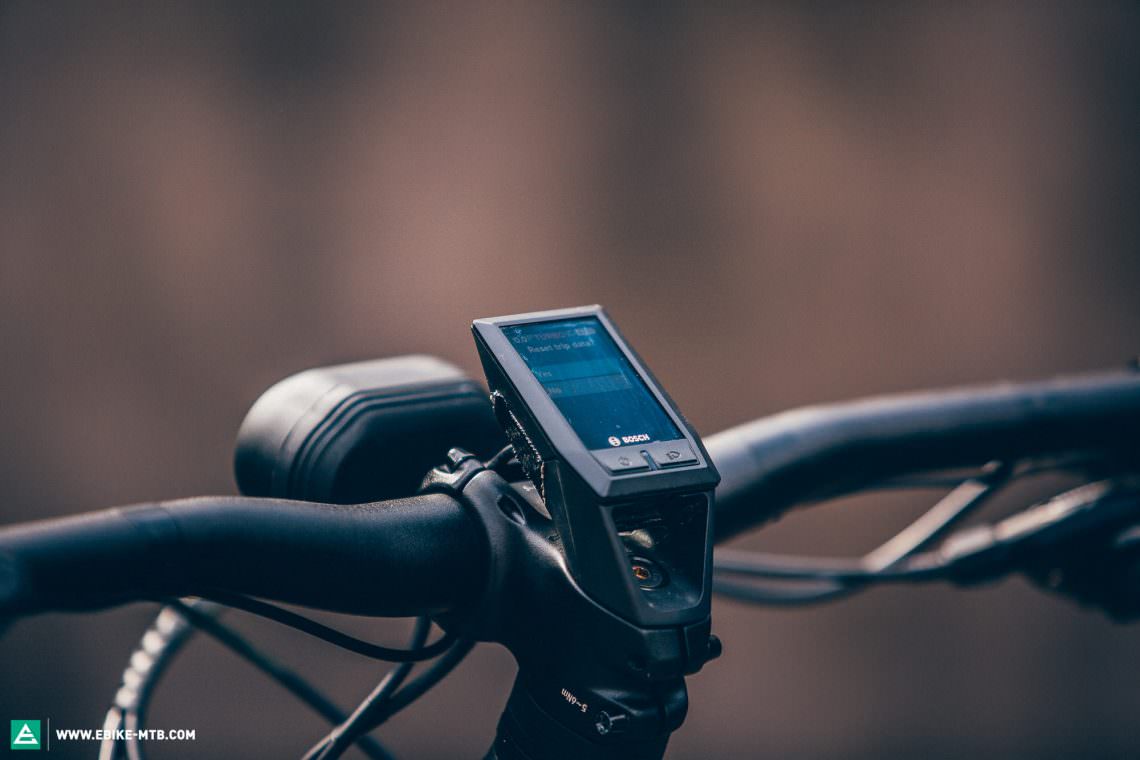
Cannondale is the only brand in the test field to use the original Bosch Kiox mount. It’s exposed position on top of the stem isn’t the best for a mountain bike.
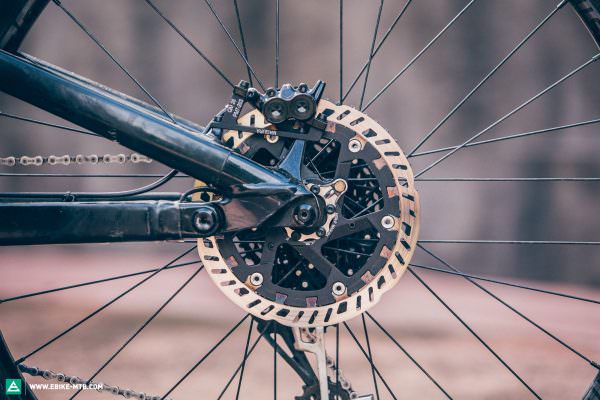
Trotz Bosch-Antrieb versteckt Cannondale is the only brand in the test field to use the original Bosch Kiox mount. It’s exposed position on top of the stem isn’t the best for a mountain bike.
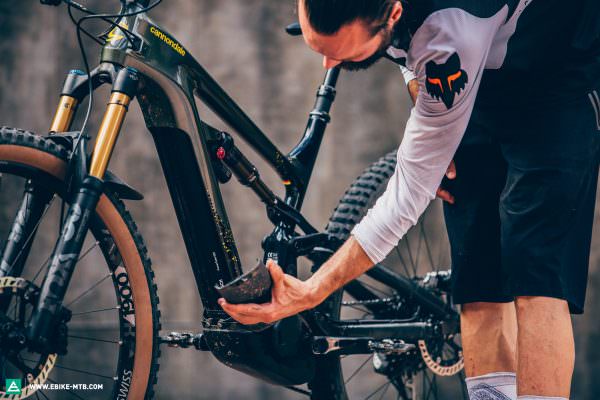
The 625 Wh battery is extremely quick and easy to remove, yet it stays securely put in the down tube without rattling.
Geometry and size of the Cannondale
Cannondale are of the opinion that besides the geometry, the kinematics of eMTBs have to be adjusted to suit the various frame and respective rider sizes. Not stopping there, Cannondale spec the frame size S with 27.5″ wheels to give smaller riders more freedom of movement.
| Size | S | M | L | XL |
|---|---|---|---|---|
| Seat tube | 410 mm | 440 mm | 470 mm | 515 mm |
| Top tube | 587 mm | 614 mm | 638 mm | 666 mm |
| Head tube | 100 mm | 110 mm | 120 mm | 130 mm |
| Head angle | 66.0° | 66.0° | 66.0° | 66.0° |
| Seat angle | 75.0° | 75.0° | 75.0° | 75.0° |
| Chainstays | 450 mm | 450 mm | 450 mm | 450 mm |
| BB Height | 351 mm | 362 mm | 362 mm | 362 mm |
| BB Drop | 10 mm | 18 mm | 18 mm | 18 mm |
| Wheelbase | 1,184 mm | 1,221 mm | 1,247 mm | 1,276 mm |
| Reach | 430 mm | 448 mm | 470 mm | 495 mm |
| Stack | 585 mm | 619 mm | 629 mm | 638 mm |
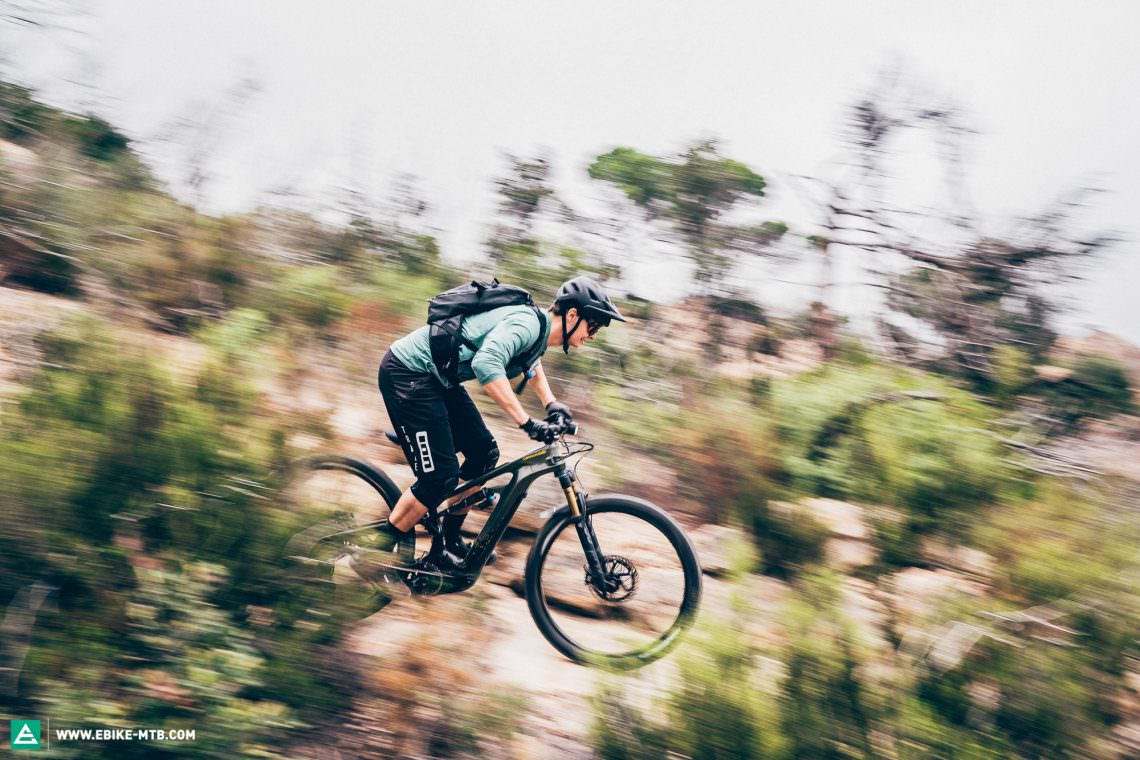
The Cannondale Moterra 1 on the trail
The pedalling position on the Cannondale Moterra 1 is central, upright and very comfortable, making it excellent for long days in the saddle. The slack seat tube angle positions the rider far over the rear wheel on steep climbs, unweighting the front tire and sagging into the rear travel. Nevertheless, the front wheel remains on the ground the moment you shift your weight forward slightly, though it isn’t very precise in tight turns. Thanks to the traction offered by the rear wheel and the excellent eMTB mode of the Bosch motor, the Cannondale Moterra 1 makes easy work of steep climbs.
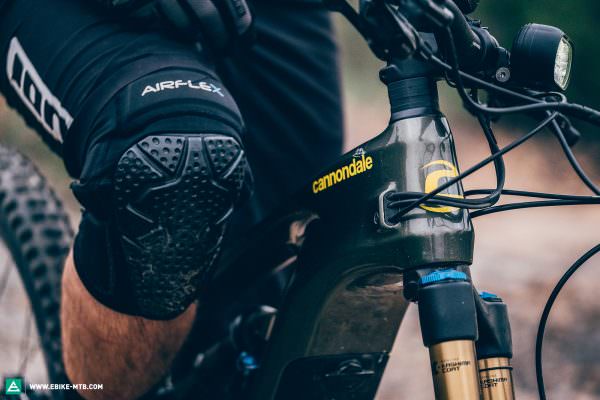
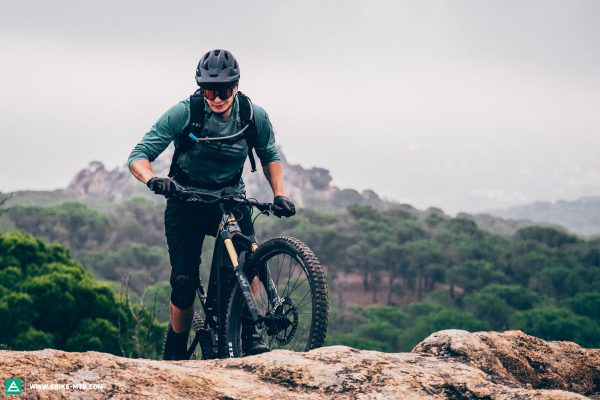
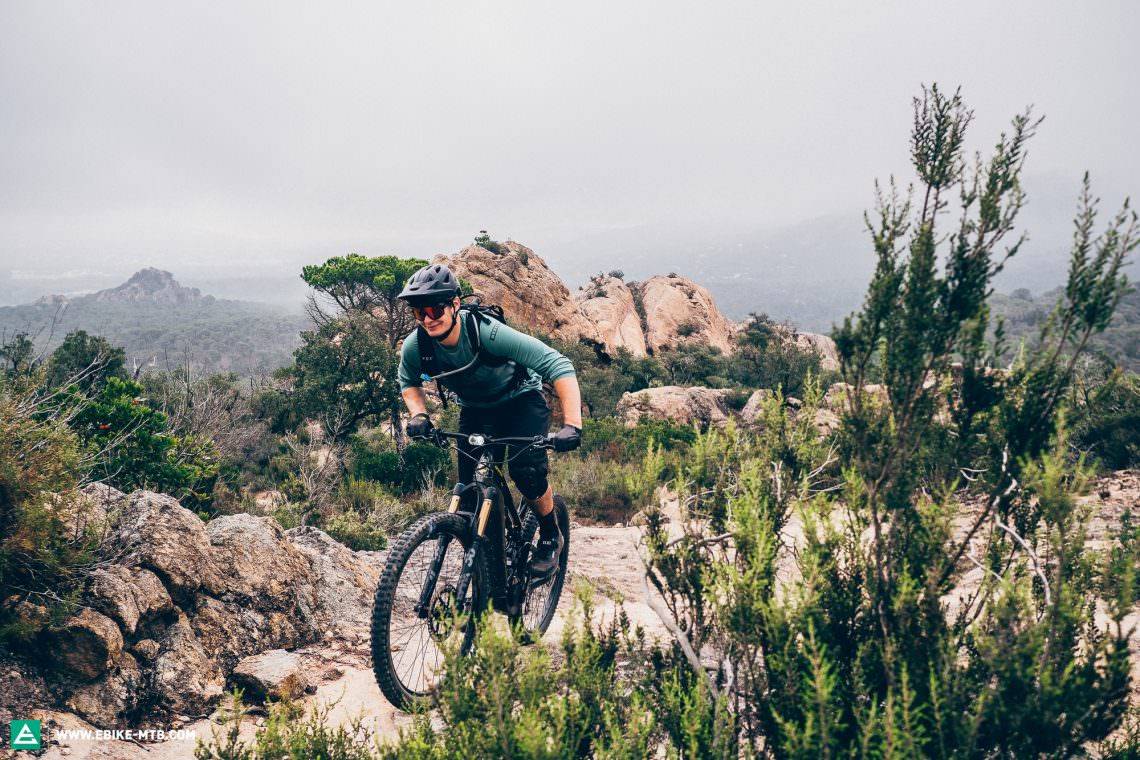
The Cannondale Moterra 1 is the Volkswagen of this group test: you’ll immediately feel comfortable and at home.
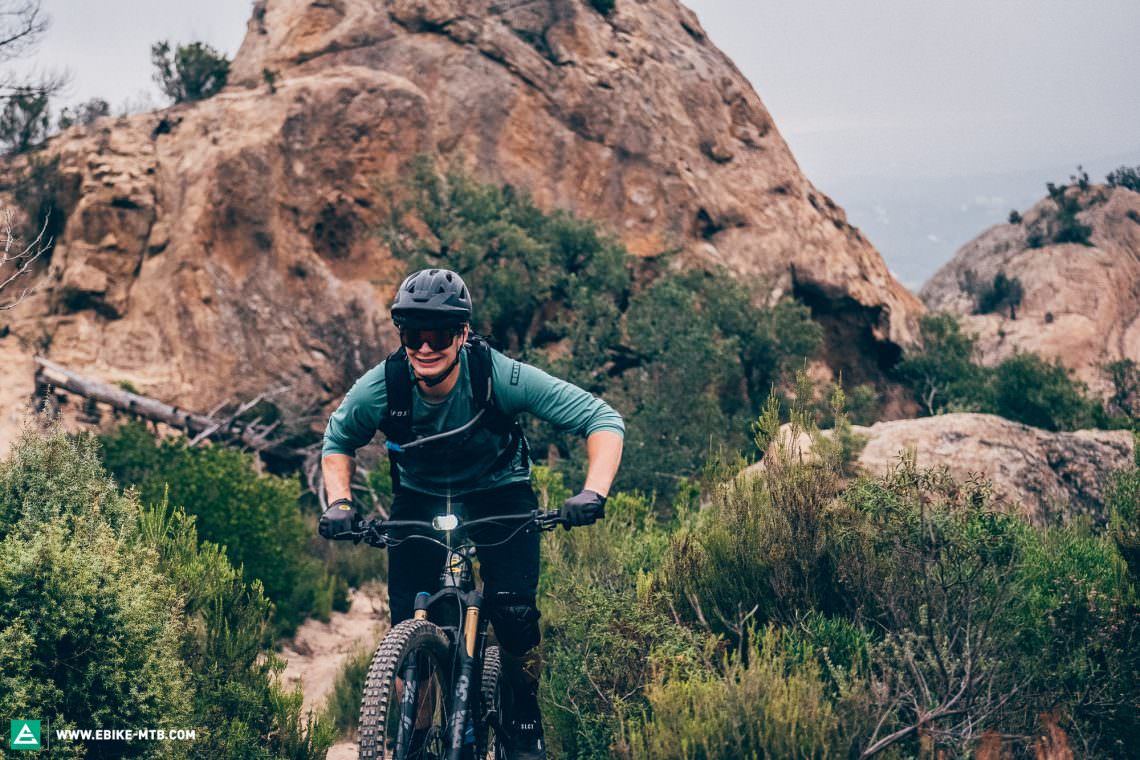
Going downhill, you feel like you’re sitting in the Cannondale Moterra 1 rather than on top of it. We didn’t once feel like we might go over the bars on steep descents or over drops. The Moterra 1 instils you with confidence on the descents, which is only amplified by the extremely powerful and easy to modulate MAGURA MT7 brakes and large rotors. Cornering, the Moterra 1 handles with predictable precision. Once you’ve decided where you want to go, it will hold its line no matter how imperfect your posture or riding technique. The FOX suspension absorbs all bumps, though it could offer the rider a little more feedback from the trail. Active riders will want a little more support from the suspension to pop off roots and ledges but once in the air, the Moterra 1 feels stable.
The suspension of the Moterra 1 is plush and easy to set up but it lacks the mid-stroke support required for very active and aggressive riders.
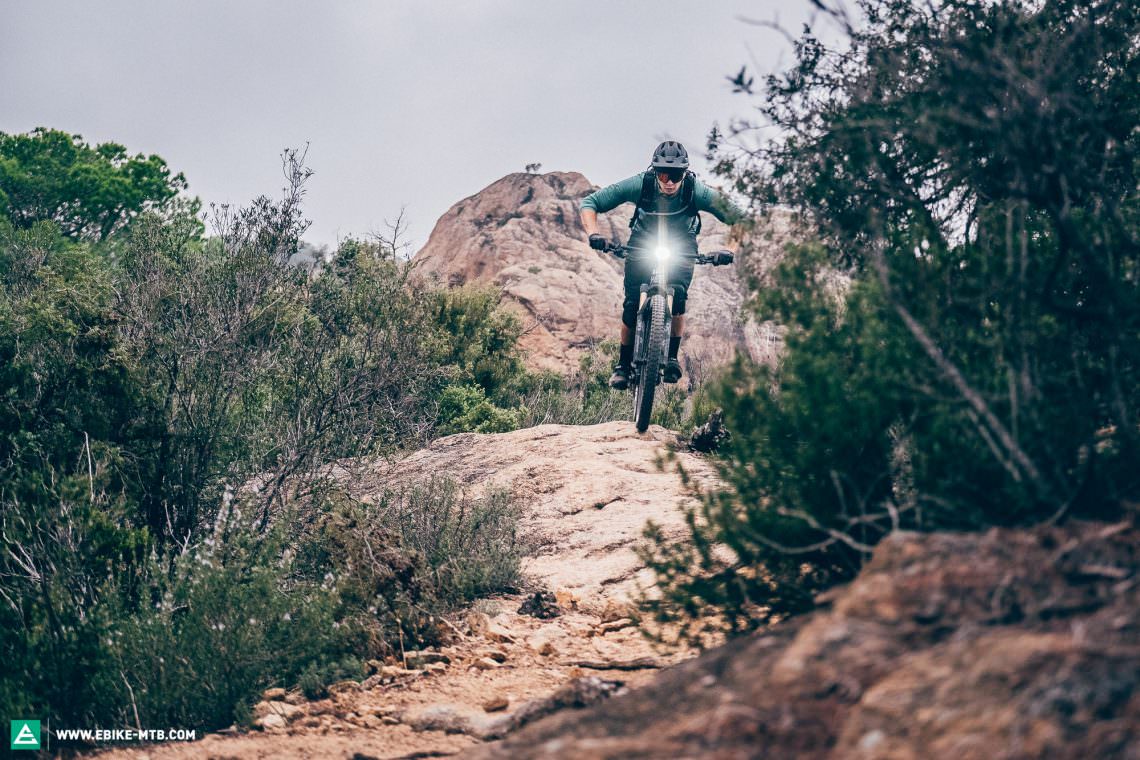
Tuning tip: alternative mount for the Kiox to put it in a more protected position behind the bars | rear tire with a thicker casing
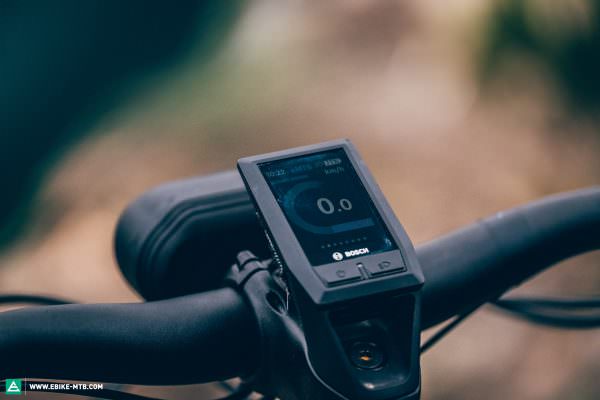
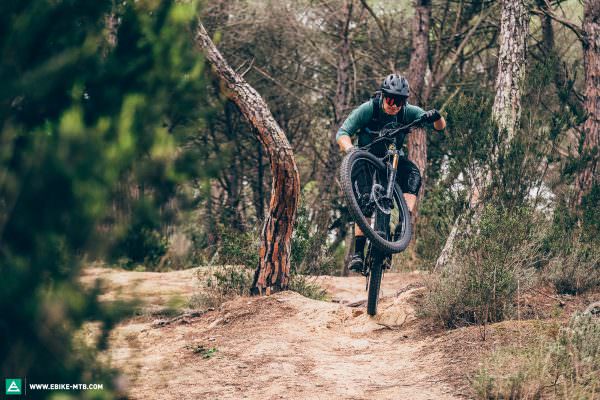
Riding Characteristics
7Agility
- sluggish
- playful
Stability
- nervous
- stable
Handling
- demanding
- balanced
Riding fun
- boring
- lively
Motor feeling
- digital
- natural
Motor power
- weak
- strong
Value for money
- poor
- top
Conclusion
The balanced geometry of the Cannondale Moterra 1 offers very composed and predictable handling, which makes it a particularly attractive option for beginners and hobbyists. In sum, it is a true everyman eMTB that performs flawlessly in every situation and day-to-day use. However, very aggressive riders will quickly reach the limits of both the suspension and tires.
Tops
- good-natured, easy handling
- frame size specific wheel sizes
- excellent brakes
- Supernova headlight as standard
Flops
- positioning of the Kiox display on the stem
- puncture-prone rear tire (when riding hard)
You can find out more about the Cannondale Moterra 1 at cannondale.com.
The test field
You can find everything you need to know about our test for the best eMTB of 2020 right here!
All bikes in test: BULLS SONIC EVO AM 6 | Cannondale Moterra 1 | Canyon Spectral:ON 9.0 | COMMENCAL META POWER 29 TEAM 2020 | CONWAY XYRON 927 Carbon | CUBE Stereo Hybrid 160 HPC | FANTIC XF1 180 Race | FOCUS JAM² 9.9 DRIFTER | Giant Reign E+ 0 Pro | Haibike XDURO Nduro 10.0 | Liteville 301 CE MK1 | MERIDA eONE-SIXTY 10K | Moustache Samedi 27 Trail | Norco Range VLT C1 | NOX Hybrid Enduro 7.1 | Orbea WILD FS M-LTD | Pivot Shuttle 29 | Rocky Mountain Altitude Powerplay Carbon 90 Rally Edition | ROTWILD R.X750 ULTRA | SIMPLON Rapcon Pmax | Specialized Turbo Kenevo Expert | Specialized S-Works Turbo Levo | Trek Rail 9.9 | Whyte E-180 RS V1 | YT DECOY CF Pro Race

Relaxed and comfortable riding on surfaced roads, both uphill and downhill.↩
Easy climbs up trails with few obstacles, wide turns and a moderate incline.↩
Active and playful descents on easy trails with few obstacles, wide turns and a moderate slope.↩
Single-track climbs on challenging terrain. Loose ground, steps, roots, tight corners and occasionally extreme inclines.↩
Singletrack descents on challenging terrain. Loose ground, steps, roots, tight corners and small jumps as well as some very steep descents.↩
High speed descents on sometimes very rough trails with large jumps and obstacles that you can’t roll over.↩
The rating used for riding characteristics refers to the bikes in the group test and the current state of development of eMTBs. The best bikes managed to blend supposedly opposite riding characteristics, feeling both lively and stable at the same time. The handling describes the balance of the bike on downhill sections. The information regarding motor-power refers to the ride-feeling in the overall context of the bike and not exclusively to the motor – that’s why the same motor can present different values.↩
Did you enjoy this article? If so, we would be stoked if you decide to support us with a monthly contribution. By becoming a supporter of E-MOUNTAINBIKE, you will help secure a sustainable future for high-quality cycling journalism. Click here to learn more.
Words: Felix Stix, Robin Schmitt, Jonas Müssig Photos: Finlay Anderson, Robin Schmitt, Felix Stix, Markus Frühmann





